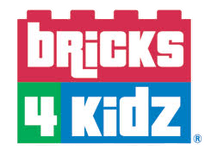We all have lots to do. Sometimes it can seem as if our “To Do” list will never get shorter, and we may find ourselves at a loss when it comes to deciding what to do next to get a particular project or task started or completed.
There can be various reasons. Maybe we just don’t want to do what needs to be done. Maybe it is boring, or a little bit hard. Maybe we have so much to do that we don’t even know where to begin.
There can be lots of reasons we have a hard time tackling or completing a project. This problem isn’t reserved only for adults. Children often face the same hurdle, and it can be more debilitating than procrastination. Homework can seem daunting, just as cleaning a room that has gotten a little, shall we say, out of hand.
So…what’s a person to do?
You may have heard “Just do what comes next”; or “Put one foot in front of the other”; or “Do something.” But what do you do when you don’t know what comes next? Where do you begin when you don’t know where the beginning is?
You have to start somewhere. And that is the trick – finding somewhere to start. Feeling in need of some direction? Try these ideas.
- Make a list. You might make a list of all the things you have to do. Or maybe you only have one thing to do. You simply don’t know where to begin. Make a list of the steps you need to take to do that one thing. Then spend some time putting those steps in order. Make sure that you break the steps into small steps. Baby steps are fine. You’ll have a basic starting point.
- Get in the right place. This means both mentally and physically. If you’re trying to concentrate but there’s lots going on, you’re going to have a hard time staying focused on the task at hand. Trying to do homework in the family room with the TV blaring and siblings arguing? Not a good idea. Move to a quiet room with plenty of workspace. How about mentally? Try some positive thinking: “I can do this” is much more motivating than “I’ll never figure this out.”
- Set a time limit. In this instance, you aren’t setting a time limit for when you will finish the task. You are setting a time limit for how long you will work on it initially. Set a timer for 30 minutes. Knowing that a stopping point isn’t far off can help remove some of the anxiety that builds when you feel like you are facing a never-ending task.
- Ask for help. This can sometimes be the hardest to do, but it can be the one thing that reaps the greatest rewards. Still feeling “stuck”? There is nothing wrong with asking for help – and kids need to know that this is okay too.
Um, yeah, but isn’t that the problem? What to do first?
As corny as it may sound, when you are having a hard time figuring out what to do, it really does help to “begin with the end in mind”. Any positive action (and that includes thinking about what you want the end result to be) can help get your momentum going.
Try beginning with number one. If it’s homework, start with the first problem. If it’s something else, look at the list of steps you made in #1 above. But the most important thing that we can do is to believe that we can accomplish our goal.
For our kids, we can help them by letting them know that we understand what they’re going through, because we’ve been there too (and many times at that!). Then we can share our knowledge to help them figure out the best next step to solve the “What to do?” question.

